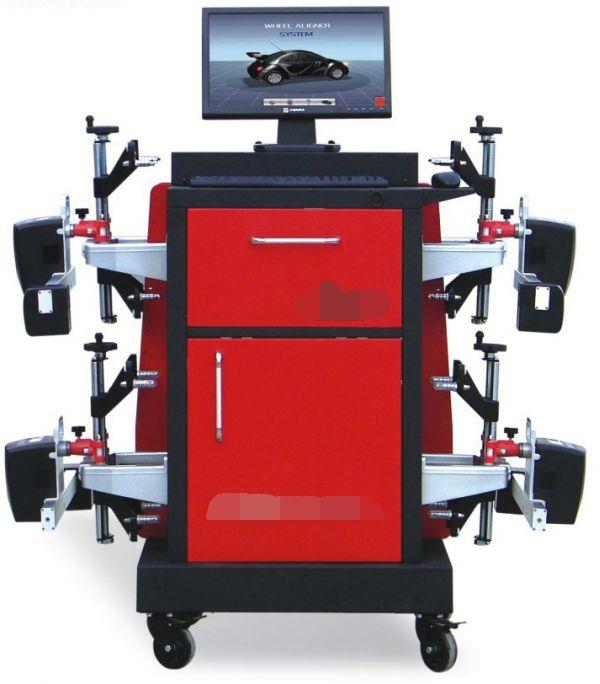Non-contact 4-wheel alignerMain angles of positioning:
Camber
Definition: The angle between the centerline of the tire and the vertical line in the air when viewed from the front of the car is called the camber angle. The wheel tilts outwards for positive and the wheel tilts inwards for negative.
Function: To prevent the suspension from deforming and causing the wheels to tilt inward when the vehicle is fully loaded, to avoid partial wear of the tires and to reduce the load on the hub bearings. To reduce the distance from the grounding point of the front wheel longitudinal rotation plane to the intersection of the extended line of the kingpin centerline and the air, so as to make steering easier.
Kingpin inclination angle
Definition: When viewed from the front of the car, the angle between the centerline of the steering axis and the vertical line in the air is called the kingpin inclination angle. The kingpin inclination is positive, and the kingpin outward inclination is negative.
Function: Makes steering easier and generates a return torque after the front wheels turn.
Caster Angle
Definition: When viewed from the side of a car, the angle between the centerline of the steering axis and the vertical line in the air is called the kingpin caster angle. The kingpin tilts backwards for a positive angle and the kingpin tilts forward for a negative angle.
Function: When the steering wheel is slightly deflected by an external force during driving, the castor will generate a torque in the opposite direction of the wheel, causing the wheel to automatically return to the correct position, thus ensuring the stability of the vehicle's straight-line driving.

Related News
- How does the dynamic four wheel aligner avoid communication interference?
- Introduction to vehicle electrical inspection
- How to choose a good pass four wheel aligner
- What is the assembly line
- The important role of the through four wheel aligner
- The four main points of 3D laser four wheel aligner maintenance
- Working principle of electric chassis dynamometer
- Vehicle off-line comprehensive diagnostic equipment
- How to choose a good dynamic four wheel aligner
- Precautions for selecting a non-contact four-wheel aligner
- Preparation work before using the vehicle off-line comprehensive diagnostic equipment
- What is the main task of the high-speed ABS brake test bench equipment?
- What are the commonly used equipment for high-speed ABS brake test benches?
- What does ADAS advanced driver assistance calibration equipment include?
- The origin of ADAS advanced driver assistance calibration equipment
- Various functions of ADAS advanced driver assistance calibration equipment
- Briefly talk about the main tasks of the comprehensive diagnostic equipment for vehicle off-line
- What are the obvious features of the comprehensive diagnostic equipment for vehicle off-line?
- The core of ADAS advanced driver assistance calibration equipment is the camera
- Don't underestimate the high-speed ABS brake test bench
